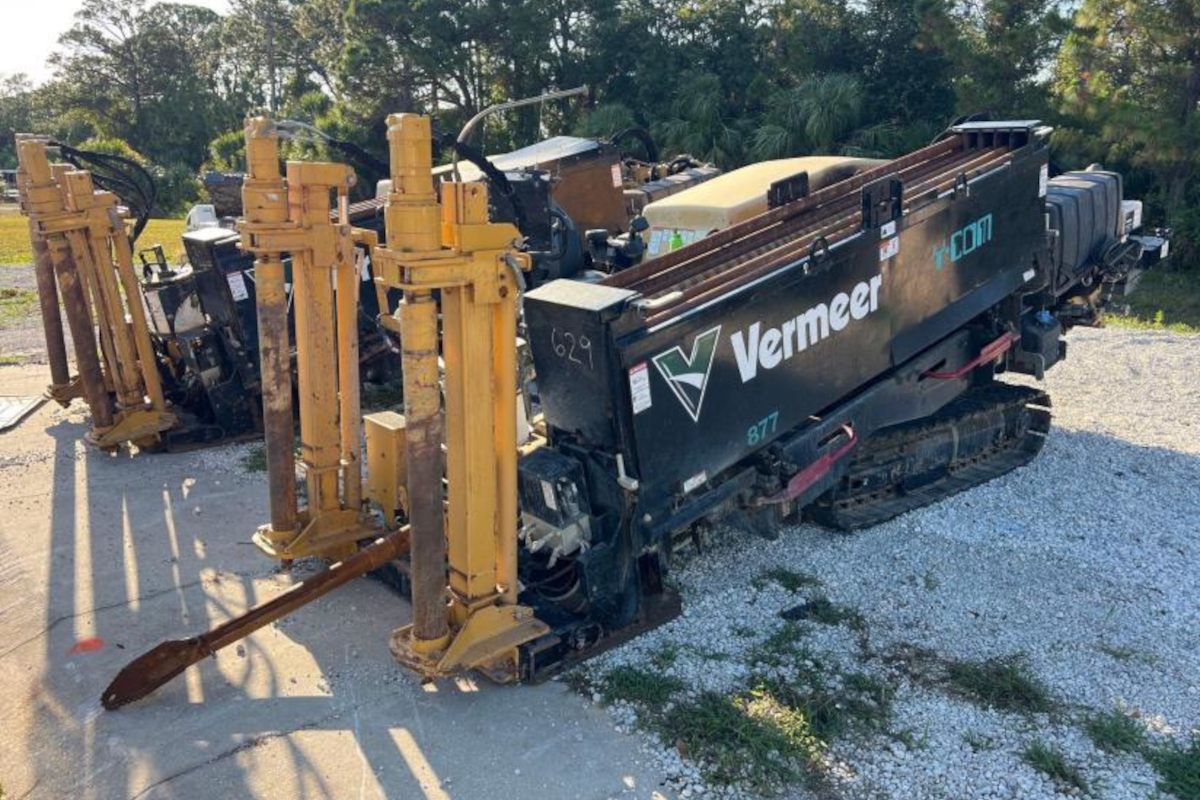
2022 Trenchless Technology Roundtable – Manufacturers Weigh-in
Pandemic Impacts, Supply Chain Issues Don’t Deter Positive Outlook for the Trenchless Sector
To gauge the pulse of the industry, Trenchless Technology annually hosts a gathering of industry leaders to discuss the trends and issues facing the market. This year, we brought in a range of experts representing manufacturing to discuss the state of the trenchless technology market. We asked them to talk openly about how the last two years have impacted the way that they do business, how supply chain issues are impacting them and their customers and what the future looks like for the overall trenchless marketplace.
We gathered the panel during the NASTT 2022 No-Dig Show in Minneapolis, Minnesota. The panel consisted of:
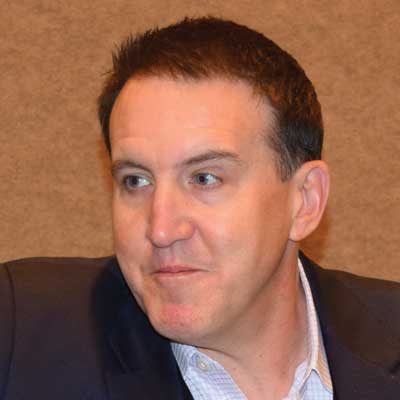
Director of Marketing for the Americas – AOC
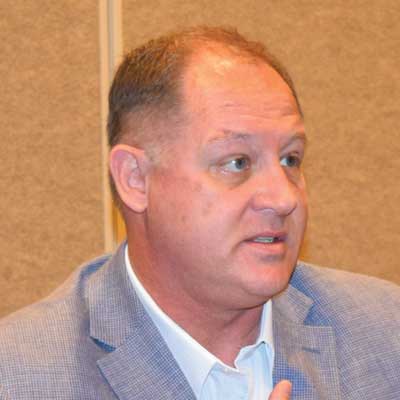
Chief Technology Officer – Aegion Corp.
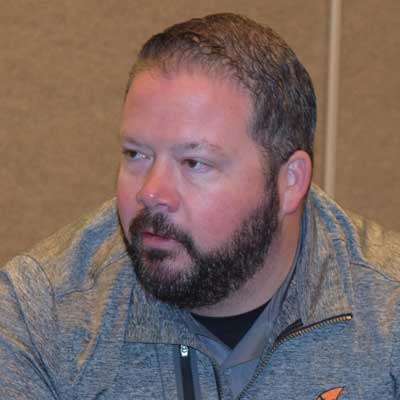
Product Marketing Manager – Ditch Witch Division
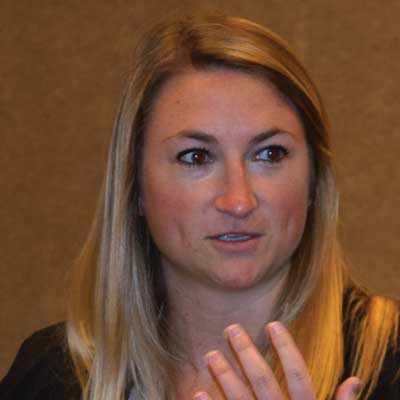
Vice President of Operations – Michael Byrne Mfg.
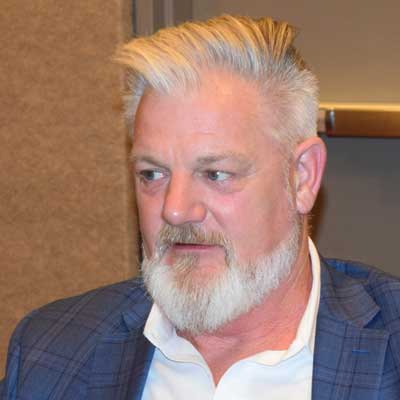
Technical Sales Director for the Americas – Channeline International
First, tell us how the last two years have impacted your business. How has it affected the markets you serve?
SHERWIN – It’s been a bittersweet couple of years and very interesting. Channeline is in a niche market and have seen revenues grow tremendously over the last two years. However, getting the product to the contractor has obviously been a challenge. So, it’s probably been the toughest two years of my career. The lack of containers available globally started in 2020 and has gotten much worse and the cost of containers has gone up drastically. The price today is approximately five times higher per container to get it from Dubai to anywhere in North America. Obviously, that has affected the business as I used to be able to quote eight- to 10-week delivery from the time of P.O. and signed shop drawings, and now I am quoting 12 weeks and it’s a Hail Mary. We are still getting product to market within that 12-week period, but we’ve had some go 16, 18, 20 weeks that got lost in transshipment.
WEIST – It’s been challenging from a manufacturing aspect. We have so many different components that go into a boring machine from engines, to gearboxes, to electronics and hydraulic components and the supply chain has been very challenging. We’ve had to become extremely flexible in designing our machines so that if Option A is not available, we’ll look at Option B and sometimes Option C. Lead times are so unreliable that you cannot plan on everything being in at the time you are trying to build a machine. That’s been difficult for our customers. The oil and gas industry in the U.S. definitely slowed down, but I think overall infrastructure work seems busy on the auger boring side. Our Canadian customers are extremely busy and that’s been good for us. We’ve been sending a lot of equipment up north, which has always been a good business for us, but the past two years, the shipments have been constant.
MAKER – Going through the housing crash of 2008, and the other times the fiber markets crashed, still didn’t completely prepare us for what was going to happen in this situation. Having the dealer network that we have, and the inventory that they had, we were probably almost a year delayed from what people were seeing from manufacturing-type issues, as far as the demands and needs. It all goes back to the reliability of what we are being told on lead times of components. Where it is really affecting us is the innovation of new products because engineers are trying to find other resources to get a product that can replace something whether it’s a pump, a motor or whatever it may be. Then the prototype parts that we are trying to produce to make new equipment, from start to finish, may have a 98-week lead time. It’s taking our product roadmap and shifting it a couple of years from where we thought we could be and it’s dragging innovation down. Let alone being in a fiber boom and we can’t provide enough equipment, which is kind of unique. In the last couple of years, we’d have all the products in the world and not enough people to do it. Now as we are developing and training new people, we don’t have the equipment to do the work at the growth rate that the fiber market is driving.
WESTERN – We have been impacted by the global economy and freight, but it’s driven us to be more innovative just for the fact that we couldn’t get the materials necessary to provide for our contracts. I like the word [Weist] used, “flexibility,” we have become very flexible in how we address things. In the past, we were very rigid due to having the control we are used to on the supply chain. We had no choice but to become flexible, over-communicate, and be innovative in how to solve problems. In some cases, the solution to that problem may not be something we manufacture. We had to procure from somebody else just to make sure we could provide the right solution to the client.
DIEHL – The past two years have been very challenging for resin suppliers. If you go back to the beginning of the pandemic when there were a lot of shutdowns and lockdowns, we experienced a sharp decline across most markets. As businesses reopened, demand quickly rebounded. The quick spike in demand set the stage for the raw material supply issues that we continue to experience today. If you look at the petrochemical producers and logistic companies, these businesses ramped down to meet demand, but then demand came back so quickly that they haven’t been able to recover. The weather events of last year exacerbated the issue. Despite the challenges, the composites industry is very strong. There has been a tremendous growth in nearly every market that we participate in and most are at or above pre-pandemic levels.
How have supply chain issues – due to the pandemic, world affairs, natural disasters, etc. – impacted your business?
WESTERN – We’ve got a couple of ingredients for our fusible PVC that we just can’t get, and our backlog is higher than it’s ever been. There are components – for us it is high tin stabilizer – that are not available right now globally, and if it is, it’s in small amounts and being used on essential processes or products, not ours. All customers have been pretty good about it, and we’ve only had a few contract adjustments. We have had good success managing through this. In some cases, there isn’t any managing through; it is what it is. You just deal with it and explain to the clients that “X” in South Korea and China are the only sources for this product in the world and they don’t have it right now. Having a partnership and a very tight relationship with open communication has been critical for us. There are so many things out of our control that, if you are helping people understand what is going on, clients have been resourceful in helping through the problem. Some have started to assist us in looking into these things and doing research on where to find the components. We have been impacted in that some of our businesses have been shut down for short timeframes, but we have managed through it. What we have experienced and what I keep coming back to is the importance of relationships; we are all experiencing the same thing but at different levels. It’s good to have the confidence that when you are talking to somebody that they understand what you are going through so it’s not this conflict; it’s rather how can we help each other.
MAKER – We’re at the point where the supply chain is allocating to us so everybody can get something and kind of stay afloat. We’re unique in that we build a lot of our equipment in-house. There are some purchased components but all the way down to the machine controllers we develop and build ourselves. In the past, it used to be a really big thing for us, but it has become a weakness because there are so many little components. We had to take the Ford mentality of manufacturing to the point that we can set it outside until we get the components to complete assembly. You could fly over the factory and see what looks like $60 million to $100 million worth of equipment that is sitting out there and dealers are wondering why they aren’t getting it yet. You have to be agile in this market because you may think you’re getting the component you need tomorrow, and you get a phone call tomorrow that you aren’t going to get it for six months. It’s not that they didn’t want to tell you, it’s that they didn’t know. We talked about resins, and we utilize resins in our beacons and it’s something we never thought would be an issue in getting. We had to be nimble with that and find multiple suppliers to get that. Every day brings new challenges that’s for sure.
SHERWIN – We’ve been lucky materials-wise, but it comes back to flexibility. The guys in Dubai have done a brilliant job of stockpiling or finding alternative suppliers and keeping the quality product that everyone is used to receiving. Our manufacturing process is relatively simple, so we’re not looking for specialized components, it’s fiberglass, resin and sand, which they have plenty of in Dubai. For two years now we’ve had a parking lot full of liners waiting for containers or space on a ship. We’ve had to air freight some product. We are working on a project where they left it to the last minute to order the product and a $200,000 order became a $280,000 order because we must air freight it. If you can be flexible, you can find ways around this.
WEIST – We’ve started holding a lot of inventory so we can support customers when they break down because that is bound to happen. Some gearboxes are 52 weeks out. Stockpiling inventory goes against so many manufacturing principles, but it’s something that we have to do to help our customers. In addition, the more that we communicate with our vendors is huge. We ask them to be honest with us. If you have bad news, we need to know it as soon as you, have it. The vendors who have been upfront with us and tell us when their lead time changes, we can work with it. It’s the ones who wait until the day before an item is supposed to ship to call and say they don’t have a ship date; those are the times it makes it extremely difficult. People are understanding if the lines of communication are open.
DIEHL – On our side, we are directly dealing with the larger petrochemical producers. Over the last year, when the winter storm hit, many petrochemical plants in Texas and Louisiana were down for several weeks. This really tightened the market for many larger raw materials, and we had to scramble to find other sources for these raw materials to keep our customers supplied with resin. After a couple of months, the supply of larger ingredients improved and now the challenge has shifted to specialty ingredients where oftentimes there are only a handful of producers globally. These materials are the most difficult to source, often with lengthy lead times. Another challenge is low inventories for many materials. Previously if there was a small outage at a supplier, the market had adequate inventory to handle it without any disruption. Now, it’s such that if a plant goes down for a short period there is an impact in supply. Both truck and rail freight has also been extremely challenging, and costs have escalated rapidly. All of these factors have driven material costs up significantly.
RELATED: Trenchless Technology Roundtable: The Contractor’s Point of View
How are customers responding to these challenges?
MAKER – We are in a unique market right now. The cost of used equipment sometimes is higher than MSRP because if you have the equipment, you can pretty much get what you want for it. They are in different buying cycles at this point. In the past, you didn’t negotiate when you got the unit, you negotiated the price. Price is further down the line now. When they will get it, is more important. If it’s going to be 365 days or 600 days before I get one, then put me down for two. It’s changed how the dealer works with the end-users and how quickly you can get something is the No. 1 negotiating factor.
WEIST – Steel is a huge part of our manufacturing process and the price of steel changes every week. It has tripled since the end of 2020 for us. The good thing is that contractors understand this because they are buying casing and they see that too. Our quotes are good for much shorter time periods. If you want it, tell us right now or the price will go up. People have gotten used to that but it’s still not a fun conversation.
MAKER – When you talk about the steel and how that factors, we may have one piece of equipment that has a lot of fiberglass on it but then you may have a vacuum excavator that is 99 percent made of steel. Trying to explain that to a customer where you might have a slight price increase on a directional drill but a 50 percent increase on another piece of equipment some get it, and others don’t understand.
SHERWIN – From our point of view, it’s tough for contractors who are on a set timeline for the completion of a project. I don’t want to lie to anybody, but at the end of the day we’re one of three manufacturers globally in a niche market. If a contractor has 200 days to complete a project and I am now taking up 100 of those days, it comes down to flexibility on their part, but most importantly on the owner. The trickle-down effect is that the contractor is likely to get hit with liquidated damages and then the contractor is coming after me for liquidated damages, so our shipping terms have changed drastically.
WESTERN – To add to what [Sherwin] said, we are municipal bid, so it’s public and it’s on a timeline. If we are transparent, all the way through the supply chain, AOC to us and us to them, they understand. One of our larger vendors provided an inflation impact sheet of their response to our industry to support the creation of a booklet that is provided to the contractor or the owner that shows what exactly is going on. Hence, to define why we are asking for a change order, and to provide an understanding of what we are experiencing in the industry that they may not see. If the end client understands what’s going on through transparency, we have experienced better collaboration.
DIEHL – One thing that has impacted our customers is lead times. AOC has always prided itself on having short lead times, particularly for the CIPP market where they are important. Because of freight challenges and strong demand, our lead times have increased significantly. This requires a lot of communication with our customers so they can manage their businesses as efficiently as possible.
What is your long-term outlook for the trenchless market?
MAKER – We’ve seen the fiber market growth rate is roughly 5 to 7 percent since 2017. And now with what’s happening in the electric market with PG&E in California, the influx of electric vehicles and charging stations going in across the United States, it’s going to change the transmission lines all the way down to the home at some point. If the oil and gas were to come back, as it was in 2012 to 2014, I don’t think there would be enough equipment or people to keep up with it if all three came on at the same time. That’s why you’ll see a lot of things done open cut. The PG&E deal in California is driving 10,000 miles of electric being put underground, honestly there wouldn’t be enough people or equipment to do that type of project if it all went trenchless. In fact, a good portion of that project will be open cut, based on equipment and people availability. The fiber market is not slowing down by any means, and the PG&E adds additional work on top of an already booming industry. Plus, with the supply chain challenges and not having the necessary equipment or inventory, in addition to the people to do the work, has probably become that bottleneck that will slow down the market.
WEIST – It’s still very busy with water and sewer infrastructure work. Oil and gas in the U.S. slowed but in Canada that has kept us busy. What we’ve seen become much more popular is the guided auger boring and following that with traditional auger boring. It’s more accurate, it gives the contractor a lot more control and insight in to what conditions they are going into. I think the more that we innovate around technology where we can make the contractor more confident about the project that he is getting into, that is the future for us.
WESTERN – For us, what we look at is the labor issue. The trenchless market is very healthy and it’s going to get healthier as we get further away from pandemics and wars. Infrastructure spend is just going to get better. Everything will correct itself with raw materials and those things. It’s going to then become a labor issue. We are experiencing the same labor issues in the EU that we are in the U.S. and Canada, so that’s where a lot of our focus has been. How can we manufacture with less labor “Through Technology” and make it safe at the same time? If you do that, you can enhance your employee experience, which helps with retention. The trenchless market is healthy enough that our bottleneck at some point in the next three to five years is going to be labor because we’re going to need more good people.
SHERWIN – As the saying goes, “The future is so bright we’re going to all need shades.” North America is growing its infrastructure rehabilitation programs exponentially not only in the bigger cities but in the smaller ones as well. Labor will be an issue for manufacturers and contractors for sure. Experienced trade labor is going to be even more of a problem as younger people are going for PhD’s and not trades. It would be nice to see a trenchless trade training program out there to train these guys to enhance the employee experience. Infrastructure spending in Canada is very healthy and that will continue. We are defiantly seeing a trend towards trenchless in Canada even though supply chain issues and getting materials to site is an issue, municipalities are turning to trenchless for sure.
WESTERN – If you look at where we were five years ago, we have figured out that where we used to think trenchless didn’t fit and the equipment didn’t fit, it now fits. The goal now in the U.S. is that everything that is above our heads needs to be in the ground or it needs to be in the cloud. I think trenchless aligns with that very well and we’re all aligned whether it’s equipment or materials, we’re aligned to support that transition. California is a perfect example. As the innovations come out, we all need to get on the same page so that people understand we have a roadmap. Up until COVID, they put us all in a defined category. We are much more flexible now as an industry.
How do you view innovation within the trenchless market?
WEIST – When I think of trenchless technology, I think we are born from innovation. It’s been people who have always been running on the fly and dealing with so much unknown in underground that you have to innovate on almost every job. Most contractors and owners are open to new technology. They are very open to it if it will improve safety on the job or if it’s going to do something that will increase efficiency on the job. As a manufacturer, that’s what we try to think about. There is a ton of technology out there, but we need to design equipment towards how a contractor will use it. For us, we’ve started looking at implementing remote controls on auger boring machines. That improves safety and gets guys out of the pit. That is always a win. We look at innovation from the point of what will make a contractor’s life easier and make the job easier.
WESTERN – We are looking at it a little differently. We start with safety and then we go to convenience: What does the client want and how easy can we make this on them? Then you get into the cost aspect of it. Convenience is where the innovation falls for us. If you go back to the water treatment facility, or wherever, what’s the system’s carbon footprint? As you look at the carbon footprint along the chain to the municipality, how do you make that whole process convenient for them so that you drive value? They get the lowest cost, safest, most convenient, most innovative solution, and that’s the term we are starting to use a lot now, “solution.” Being innovative through strategic partners, as well as through manufacturing technologies and great solutions. It’s about how we reduce the carbon footprint and make it the most convenient and cost-effective for the client.
DIEHL – AOC continues to invest heavily in the development of new resins for the CIPP market. The goal is to have the materials available if there is a shift in the market, whether it be styrene-free resins, resins for potable water or something else that may come up. We strive to make sure our customers have the resins they need to take advantage of opportunities as they arise.
MAKER – Anything automated or autonomous is the way for the future. I’ve had the experience of working with a lot of companies from the aspect of data management. Data management is turning into probably the most sellable product in any industry. When I say that, it’s not only the telematics that is on a piece of equipment today, but people are looking at utilization, duty cycles, and fuel consumption and it’s going down to the job site today. At some point, anything underground, they want mapped and we are working through that process now. How can we help as OEMs? It’s coming back to data management, the locates, the things we are having to do today. In California, if you can’t do a pre- and post-camera inspection, then you can’t put anything trenchless on that job site. The regulations tend to follow the European market. So having that overall total data management will be key to jobsite success. For example, you had an auger boring job where you are putting product in the ground, you have this massive cloud-based information center that you know what’s in the ground already. You can see a topographical view of it as well as a 3D image of what is in the ground. You also take an as built of what you just put in the ground and input that data, ensuring everyone else has that information as well.
SHERWIN – One of the innovations we looked at in the last two years, and it’s one I’ve really driven, is as a manufacturer of large diameter pipe, the challenge has always been, how do we fit that in a 40-ft container to ship it. So, an innovation that Channeline has developed was the ability to break the pipe into segments so that we can ship globally and fit more pipe in a container nested. That was a challenge, but we just delivered a 16-ft diameter pipe to Detroit that was shipped in four pipe segments.
RELATED: 2020 Trenchless Technology Roundtable – Manufacturers Offer Their Perspective
How is the use of new technology viewed by contractors and owners?
WESTERN – There is one element that we haven’t spoken about. It is the education of the end client on what’s available. A lot of times, our end customers may not understand our technologies. They understand what they need to get a project done but not all options to the solutions that are out there for them. We have to figure out how to get them that information out, to educate the people who need our services. As we continue down that path, the closer the industry gets to having commonalities and options in the innovation; it’s just going to continue to push us even further forward.
MAKER – As OEMs we look at it from the outside looking in, seeing the end-users and what they are asking for has changed over the years. The innovations on the directional drill we submitted for the Abbott Award has nine new patents. None of those patents are really a selling feature to the customer. They are more worried about the overall function of how the machine works. Those things are creature comforts that are a bonus to have but aren’t necessarily things that they are asking for. It’s just making our life on the back-end easier to develop something that has commonality and those features built into it. The market is more driven today by regulations and the workforce more than anything. How we defined innovation 25 years ago is different than how we define it today.
SHERWIN – One of the smartest innovations I saw in this industry was about 15 years ago when the cutter and CCTV operators started using PlayStation remotes and suddenly you have these 19-year-old whizzes sitting in CCTV trucks and cutting laterals. I think CUES did it first, just an absolutely brilliant idea.
WEIST – The evolution of the market is somewhat reactionary to the political climate and that changes what the priority of jobs are. Whether it’s infrastructure-based or oil and gas. In general, the trenchless market is busy. The workforce aspect is difficult. In the trenchless industry, we are somewhat unseen. We are a fairly large group, but we are not well seen by the public because we are always underground. I think better education of what we are capable of, what we are doing for infrastructure would help get people involved. Because I agree the workforce thing will be a big bottleneck for both manufacturers and contractors.
What effect do mergers & acquisitions have on the market in general?
WESTERN – I think there is a trend and it’s going to be a positive trend. When you look at all the things we talked about this morning, it’s really about the solution. It goes further than who am I working for today. With these mergers and acquisitions, what you will start seeing is, and I’ll use Aegion as an example, they will manage all of a project for you. Because Aegion will provide you with the solution. We should be the professionals and should understand in a given environment, with a given layout, what is the most cost-effective carbon-friendly solution for that system owner. For example, if you’re in downtown New York the solution for a water pipe is much different than if you are in Oklahoma City. If you can come in with access to all these specialized companies and employees, who are efficient at using these different technologies, you can provide a single source for the solution. On some projects you might have 15 different contractors and just the coordination and collaboration to get to the end solution is difficult. The benefit that we see is that there will be companies that can provide that same solution much quicker, more cost-effectively, and it’s going to be easy for the client. It’s a little painful to merge all of these companies and make everything mesh together, but in the end having access to all the different options will not only be better for the client but it’s also going to be better for innovation and the industry. There are a lot of people who are nervous about the gobbling up and combining of companies but, in the end, it is going to be very good because it’s going to drive the best, cost-effective, safety-related solution to the client.
RELATED: Trenchless Technology Canada Roundtable – 2020 Municipal Forum
What is your view of the global trenchless market?
WESTERN – The way I see it, on a global scale, you need to be localized. You need to have a local presence. You must be able to address the market that you are in locally. On the domestic front, that means becoming more of a domestic purchaser. Aegion had become dependent on things sourced globally. Even though it might be a little bit more expensive and cost a little more time, we’re going to build relationships domestically to make sure we avoid sourcing issues in the future, so we have access to materials we need and it’s easier to control.
DIEHL – As I look at the global trenchless market, there are a lot of regions that haven’t embraced trenchless technologies. I think this is a good growth opportunity for companies with the technology and expertise to expand into these markets.
Mike Kezdi is the managing editor of Trenchless Technology.




